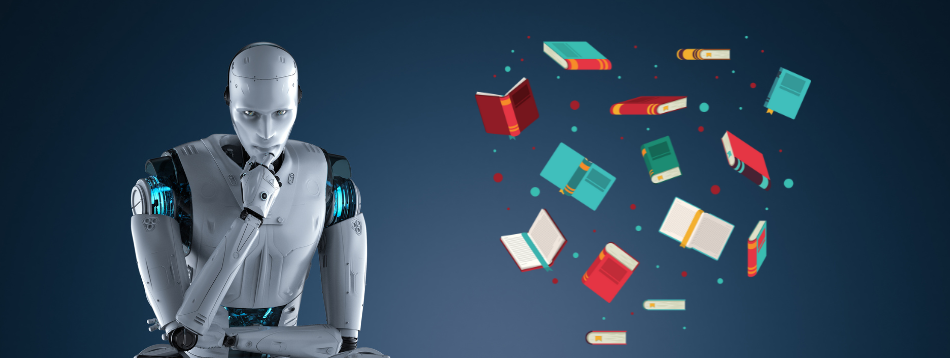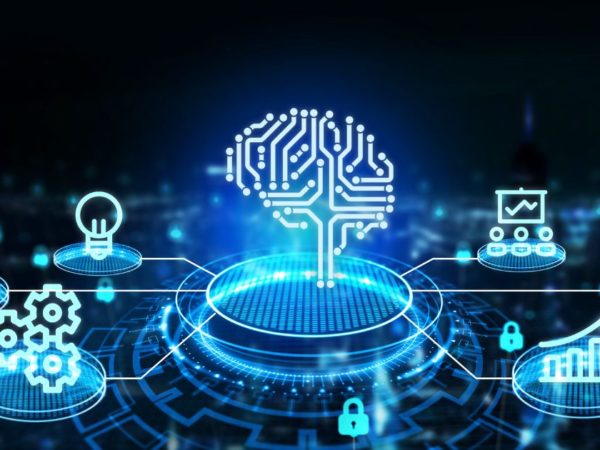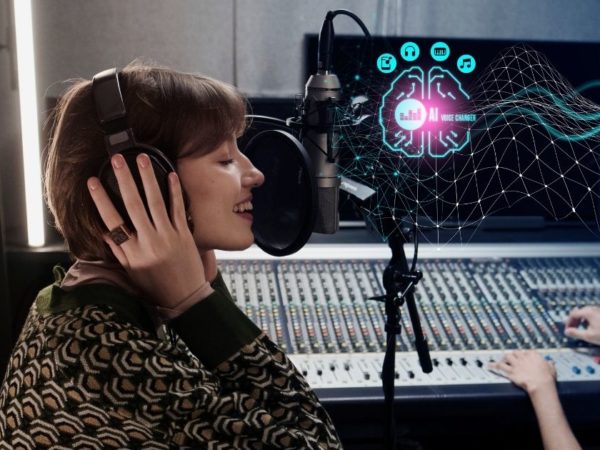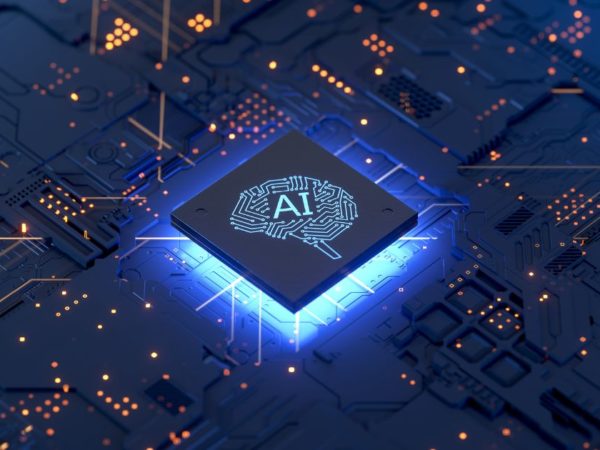Artificial intelligence (AI) is a popular and innovative technology that takes human intelligence to the next level. It offers the power of accurate intelligence integrated with machines.
Humans are bestowed with high-level thinking, reasoning, interpreting, and understanding of knowledge. The knowledge we gain helps us perform different activities in the real world.
Nowadays, even machines are becoming capable of doing so many things, thanks to technology.
Recently, the usage of AI-powered systems and devices is rising due to their efficiency and accuracy in performing complex tasks.
Now, the problem is, while humans have acquired many levels and types of knowledge in their lives, machines face difficulty in interpreting the same knowledge.
Hence, knowledge representation is used. This will solve complex issues in our world that are hard and time-consuming for humans to tackle.
In this article, I’ll explain knowledge representation in AI, how it works, its types and techniques, and more.
Let’s begin!
What Is Knowledge Representation and Reasoning?
Knowledge representation and reasoning (KR&R) is a part of artificial intelligence that is solely dedicated to representing information about the real world in such a form that a computer can understand and take action accordingly. This leads to solving complex problems, such as computation, having a dialog in natural language, diagnosing a critical medical condition, etc.
Knowledge representation finds its way from psychology about how a human is capable of solving problems and representing knowledge to design formalisms. This will let AI understand how a human makes complex systems simpler while building and designing.
The earliest work was focused on general issue-solvers, which was developed by Herbert A. Simon and Allen Newell in 1959. These systems used data structure for decomposition and planning. The system first starts with a goal and then decomposes the goal into sub-goals. Afterward, the system sets out some construct strategies that can attend to each subgoal.
These efforts then led to a cognitive revolution in human psychology and a phase of AI that focused on knowledge representation. This resulted in expert systems in the 1970s and 1980s, frame languages, production systems, and more. Later, AI changed its primary focus to expert systems that could possibly match human competence, such as medical diagnosis.
Moreover, knowledge representation allows computer systems to understand and utilize the knowledge to solve real-world problems. It also defines a way through which you can represent knowledge and reasoning in AI.
Knowledge representation is not just about storing data in databases; rather, it enables intelligent machines to learn from human knowledge and experience the same so that a machine can behave and act like a human.
Humans have knowledge that is alien to machines, including feelings, intentions, beliefs, common sense, judgments, prejudices, intuition, and more. Some knowledge is also straightforward, like knowing certain facts, general knowledge of events, people, objects, language, academic disciplines, etc.
With KR&R, you can represent the concepts of humans in an understandable format for machines and make the AI-powered systems truly intelligent. Here, knowledge means providing information regarding the ecosystem and storing them, whereas reasoning means taking decisions and actions from the stored information based on the knowledge.
What Knowledge Is to Be Represented in AI Systems?
The knowledge that needs to be presented in artificial intelligence systems can include:
- Object: Objects surround humans constantly. Hence, the information regarding those objects is essential and must be considered a knowledge type. For example, pianos have white and black keys, cars have wheels, buses need drivers, planes need pilots, etc.
- Events: Numerous events are constantly taking place in the real world. And human perception is based on events. AI needs to have events knowledge to take action. Some events are famines, the advancement of societies, wars, disasters, achievements, and more.
- Performance: This knowledge deals with humans’ certain actions in various situations. It represents the behavior side of knowledge which is quite essential for AI to understand.
- Meta knowledge: For instance, if we look around the world and sum up all the knowledge out there, we see it is mostly divided into three categories:
- What we already know
- What we know is basically things we do not know completely
- What we do not know yet
- Meta knowledge deals with the first one, i.e, what we know and lets AI perceive the same.
- Facts: This knowledge is based on the factual description of our world. For example, the earth is not flat but also not round; our sun has a voracious appetite, and more.
- Knowledge-base: The knowledge base is the main component of human intelligence. This refers to a group of relevant data or information on any field, description, and more. For example, a knowledge base on designing a car model.
How Does Knowledge Representation Work?
Typically, a task to carry out, a problem to solve, and getting a solution, is given informally, like delivering parcels when they arrive or fixing electrical issues in the house.
To solve a real problem, the system designer must:
- Carry out the task to determine what better solution it can provide
- Represent the issue in a language so a computer can reason it
- Use the system to computer a final output, which is the solution for users or a sequence of activities needed to be done in the ecosystem.
- Interpret the final result as a solution to the primary issue
Knowledge is the information that a human already has, but machines need to learn. Since there are a lot of problems, the machine needs knowledge. As a part of the design system, you can define what knowledge is to be represented.
Connection Between Knowledge Representation and AI
Knowledge plays an essential role in intelligence. It is also responsible for the creation of artificial intelligence. When it is needed to express intelligent behavior in the AI agents, it plays a necessary role. An agent is unable to function accurately when it lacks experience or knowledge of certain inputs.
For example, if you want to interact with a person but are unable to understand the language, it is obvious that you can’t respond well and deliver any action. This works the same for agents’ intelligent behavior. AI needs to have enough knowledge to carry out the functionality as a decision-maker discovers the environment and applies the required knowledge.
However, AI can’t exhibit intellectual behavior without the components of knowledge.
Types of Knowledge Represented in AI
Now that we are clear about why we need knowledge representation in AI, let’s find out the types the knowledge represented in an AI system.
- Declarative knowledge: It represents the objects, concepts, and facts that help you describe the whole world around you. Thus, it shares the description of something and expresses declarative sentences.
- Procedural Knowledge: Procedural knowledge is less compared to declarative knowledge. It is also known as imperative knowledge, which is used by mobile robots. It’s for declaring the accomplishment of something. For example, with just a map of a building, mobile robots can make their own plan. Mobile robots can plan to attack or perform navigation.
Moreover, procedural knowledge is directly applied to the task that, includes rules, procedures, agendas, strategies, and more.
- Meta Knowledge: In the field of artificial intelligence, pre-defined knowledge is known as meta-knowledge. For example, the study of tagging, learning, planning, etc., falls under this type of knowledge.
This model changes its behavior with time and utilizes other specifications. A system engineer or knowledge engineer utilizes various forms of meta-knowledge, such as accuracy, assessment, purpose, source, life span, reliability, justification, completeness, consistency, applicability, and disambiguation.
- Heuristic Knowledge: This knowledge, which is also known as shallow knowledge, follows the thumb rule principle. Hence, it is highly efficient in the process of reasoning as it can solve issues based on past records or problems that are compiled by experts. However, it gathers experiences of past problems and provides a better knowledge-based approach to specify problems and take action.
- Structural Knowledge: Structural knowledge is the most simple and basic knowledge that is used and applied in solving complex problems. It tries to find an effective solution by finding the relationship between objects and concepts. In addition, it describes the relationship between multiple concepts, like part of, kind of, or grouping of something.
Declarative knowledge can be represented as the describing one, whereas procedural knowledge is the doing one. Additionally, declarative knowledge is defined as explicit, whereas procedural knowledge is tacit or implicit. It is declarative knowledge if you can articulate the knowledge and procedural knowledge if you can’t articulate it.
Techniques of Knowledge Representation in AI
There are four major techniques out there that represent the knowledge in AI:
- Logical representation
- Semantic networks
- Production rules
- Frame representation
Logical Representation
Logical representation is the basic form of knowledge representation to the machines where a defined syntax with basic rules is used. This syntax has no ambiguity in the meaning and deals with prepositions. However, the logical form of knowledge representation acts as the communication rules. This is the reason it can be used to represent facts to the machines.
Logical representation is of two types:
- Propositional Logic: Propositional logic is also known as statement logic or propositional calculus that works in a Boolean, which means a method of True or False.
- First-order Logic: First-order logic is a type of logical knowledge representation that you can also term First Order Predicate Calculus Logic (FOPL). This representation of logical knowledge represents the predicates and objects in quantifiers. It is an advanced model of propositional logic.
This form of knowledge representation looks like most of the programming languages where you use semantics to forward information. It is a highly logical way of solving problems. However, the main drawback of this method is the strict nature of the representation. In general, it is tough to execute and not very efficient sometimes.
Semantic Networks
A graphical representation, in this type of knowledge representation, carries the connected objects which are used with the data network. The semantic networks include arcs/edges (connections) and nodes/blocks (objects) that describe the connection between the objects.
This is an alternative to the First Order Predicate Calculus Logic (FOPL) form of representation. The relationships in the semantic networks are of two types:
- IS-A
- KIND-OF
It is a more natural form of representation than logical due to its simplicity of understanding. The main downside of this form of representation is that it is computationally expensive and doesn’t include equivalent quantifiers that you can find in logical representation.
Production Rules
Production rules are the most common form of knowledge representation in AI systems. It is the simplest form of representing if-else rule-based systems and hence, can be understood easily. It represents a way of combining FOPL and propositional logic.
In order to technically understand the production rules, you need to first understand the constituents of the representation system. This system includes a set of rules, working memory, rule applier, and a recognized act cycle.
For every input, AI checks the conditions from the production rules, and after finding a better rule, it takes the needed action immediately. The cycle of selecting rules based on the conditions and acting to solve the issue is known as the recognition and act cycle that takes place in every input.
However, this method has some problems, such as inefficient execution due to the active rules and lack of gaining experience due to no storage of past results. Since the rules are expressed in natural language, the cost of the disadvantages can be redeemed. Here, rules can be changed and dropped easily if required.
Frame Representation
To understand the frame representation at a fundamental level, imagine a table consisting of names in columns and values in rows; the needed information is passed in this complete structure. In simple words, frame representation is a collection of values and attributes.
This is an AI-specific data structure that uses fillers (slot values that can be of any data type and shape) and slots. The process is quite similar to the typical Database Management System (DBMS). These fillers and slots form a structure called a frame.
The slots, in this form of knowledge representation, have names or attributes, and the knowledge related to the attributes is stored in fillers. The main advantage of this type of representation is that similar data can be merged into groups to divide the knowledge into structures. Further, it is divided into sub-structures.
Being like a typical data structure, this type can be understood, manipulated, and visualized easily. Typical concepts, including removing, deleting, and adding slots, can be carried out effortlessly.
Requirements for Knowledge Representation in AI system
A good knowledge representation contains some properties:
- Representational accuracy: Knowledge representation needs to represent each kind of required knowledge accurately.
- Inferential efficiency: It is the ability to handle inferential knowledge mechanisms easily in productive directions using appropriate guides.
- Inferential adequacy: Knowledge representation should have the ability to manipulate some representational structures to represent new knowledge based on the existing structures.
- Acquisitional efficiency: The ability to gain new knowledge using automatic methods.
AI Knowledge Cycle
AI systems include some major components to show intelligent behavior that make representing knowledge possible.
- Perception: It helps the AI-based system collect information about the environment using different sensors and makes it familiar with the ecosystem to efficiently interact with the problems.
- Learning: It is used to allow AI systems to run deep learning algorithms that are already written to make AI systems deliver the needed information from the perception component to the learning component for better learning and understanding.
- Knowledge representation and reasoning: Humans use knowledge to make decisions. Hence, this block is responsible for serving humans through the knowledge data of AI systems and using relevant knowledge whenever required.
- Planning and execution: This block is independent. It is used to take data from knowledge and reasoning blocks and execute relevant actions.
Conclusion
Humans can gain knowledge in different ways, and so do AI-based machines. As AI is evolving, representing knowledge to machines in a better way helps you solve complex problems with minimal error. So, knowledge representation is an essential attribute for AI machines to work intelligently and smartly.
You may also look at the difference between Artificial Intelligence, Machine Learning, and Deep Learning.



